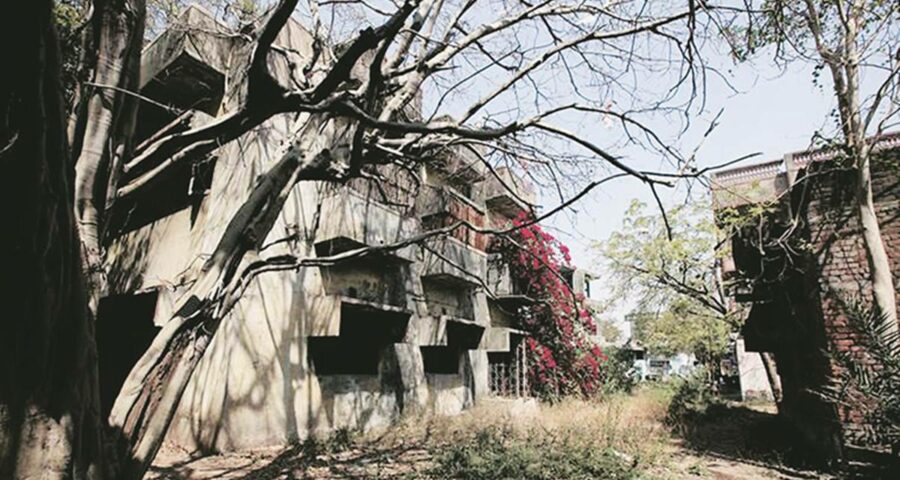“There was no evidence to establish conspiracy,” Senior Advocate Mukul Rohatgi, appearing for the SIT, told a bench headed by Justice A M Khanwilkar.
The trial court which decided the Gulberg Society case in connection with the 2002 Gujarat riots had found no larger conspiracy and issues it had already dealt with were being raised again to keep the “pot boiling”, a Special Investigation Team that probed the communal incidents told the Supreme Court on Wednesday.
“There was no evidence to establish conspiracy,” Senior Advocate Mukul Rohatgi, appearing for the SIT, told a bench headed by Justice A M Khanwilkar.
He said the tapes of the sting operation conducted by Tehelka magazine were considered “unreliable” in establishing conspiracy.
The bench, also comprising Justices Dinesh Maheshwari and C T Ravikumar, is hearing an appeal by Zakia Jafri, the wife of Congress leader Ahsan Jafri who was killed by a mob in the society. Her appeal challenged a Gujarat High Court order that upheld the Metropolitan Magistrate Court’s decision to accept the SIT closure report despite a protest petition.
The SIT report had cleared the then Gujarat Chief Minister Narendra Modi and others in riot-related cases.
Responding to Rohatgi’s submission, Justice Khanwilkar said: “Admittedly, the material now presented with the protest petition was not before the trial court. So there was no occasion for the trial court to go into it.”
Rohatgi, however, insisted that the relevant material was placed before the trial court. He said this court went into it and found no evidence to back the claims of a larger conspiracy.
The trial court had found that there was no violence in Gulberg Society till noon on February 28, 2002, except for some stone-pelting, and that the riots broke out after Jafri fired eight rounds from his double-barrel gun, “which agitated people”, Rohatgi said.
Referring to the allegations of a minister visiting the police control room on the day of the riot, he said the trial court had agreed with the SIT’s finding that there was no material to show the minister exerted any influence on the police.
“Every issue which is raised before this court was raised before the trial court and argued thoroughly and the trial court had given its finding on the basis of material available before it… The trial court has applied its mind to every material, every contention on both sides… The idea is to keep boiling”, said Rohatgi.
He added that the trial court had termed as “unclear, imaginary and false” the allegation that bodies (of the Godhra train victims) were handed over to the VHP and paraded.
The post-mortem had to be done somewhere and so a call was taken to do it at the railway station itself. Then it was sent to Ahmedabad in the night as that was the terminating point of the train, said Rohatgi.
“If there was any intention to inflame passions, they would have paraded it first, then done a post-mortem somewhere and then sent to Ahmedabad in the daytime… The bodies were not given to VHP people. They only accompanied. They were there because their karsevaks were killed… Bodies were handed over to relatives who took it atop vehicles in police bandobast..How can that be said to be parading?” Rohatgi said.
Rohatgi said a meeting was held by the state administration to review the law and order situation on the morning of February 28. The meeting must have been at about 10 am and it was decided to send a wireless message asking all to be alert. This was sent by 10.55 am and by afternoon the army was called, said Rohatgi, adding that this does not suit the petitioner’s theory that the state looked the other way when riots happened.
“This was the start of whatever the state administration wanted to do, Unfortunately the administration was overrun by the mobs,” he added.
Rohatgi pointed out that neither the trial court nor the Justice Nanavati commission had found any larger conspiracy. The riots were a “spontaneous reaction to the train burning”, he said.
Rohatgi said the Magistrate Court and the High Court had spent hours on the closure report before accepting it and wondered: “Can we say there is no application of mind?”
The closure and protest petition were heard on a day-to-day basis, he said, adding that the Magistrate’s order “can by no stretch of imagination be said to be without application of mind or perverse. Then it goes to HC which also spent months on it.”
The senior counsel said the Nanavati Commission had found the three witnesses of the petitioner, former police officers Sanjiv Bhatt, R B Sreekumar and Rahul Sharma, untrustworthy.
He stated that the protest petition was mostly based on the conclusions of the Citizens Tribunal and added: “There is no place in a legal system for such tribunals.”
“There is no credible material except for some allegations. These are all ramblings… over imaginary issues… even going to the extent of questioning the burning of the train,” he added.
Rohatgi submitted that 18 witnesses had submitted prepared statements to the Commission and when questioned about this had said that these were given to them by Teesta Setalvad of the NGO Citizens for Justice and Peace.
“What was started by the complainant (Zakia)…she is being kept away and it is all being driven by Teesta and Sreekumar…so many allegations…just to keep the pot boiling”.
The arguments will resume Thursday.
Source: Read Full Article


